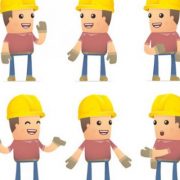Safety Tip of the Week: Communicate!
It’s important to establish clear communication channels on work-sites, especially those that involve inherent risk, like construction and mining. Here are some important communication essentials you need to keep in mind.
Regular Meetings
Yes, we know, meetings are unpopular. They are also the best way to make sure team members are all on the same page. Daily meetings allow every step of the project to be discussed and help everyone involved to stay aware of the big picture, as well as flesh out the details for means and methods.
Meetings are also important for going over personnel issues, like assigning people to specific tasks. If you are on a large work-site that involves multiple trades or roles, such as construction, energy or mining, it also provides an opportunity for everyone to touch base and be kept in the loop. Coordinating the development of a project is a huge task, and regular meetings—even brief ones—are essential for communicating about a variety of issues.
Job Expectations
EWPA yellow card information should be communicated before a project even commences. In addition to communicating safety training expectations, it’s important to communicate procedures and processes for just about everything. How should workers dress? How do you announce a travel tower is about to be moved? Where is it safe to sit and cool off for a second? All of these details need to be known to everyone.
Communication Methods
Posters are a great way to communicate basic ‘Do’ and ‘Do Not’ messages. Some other reminders that can be shared on posters include checking that workers are wearing appropriate protective gear, instructions for calling attention to a hazardous or emergency situation, and other safety-related messages. These can be helpful even when they’re not a legal requirement.
Using mobile phones on job sites—especially those that are spread out, crowded, or exceptionally noisy—is a great way to communicate. Picture phones are also helpful for identifying hazardous situations, reporting defective equipment or materials, and updating team members on the project’s progress.
Communication and Access Equipment
If you’re working on an elevating work platform or telehandler hire, communication is especially important. If you can maintain direct visual contact between the access equipment’s maximum height and the ground level, adopting hand signals is a good idea. Worksites can be noisy and managing tools at height AND a phone is a bad idea. If you have a hands-free communication device, that’s a great way to communicate with workers who are using access equipment.
Not only is it crucial to be able to communicate between the ground and those working on an elevating work platform, but everyone on a job-site needs to know when and where access equipment is traveling. For example, if you’re a telehandler to move large, heavy material, everyone working on the ground needs to know which areas to avoid.
The bottom line is that on every project, constant, clear communication is vital to maintaining a safe work environment.



